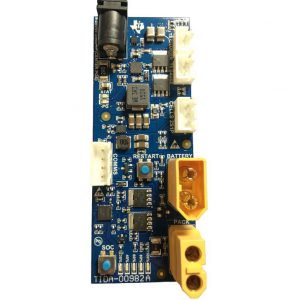Expanding drone battery life is usually seen because the Holy Grail of UAS. For one mega-corporation recognized greatest for its calculators, a pair of recent circuit designs may add as much as extra flight time and subtract from energy limitations.
Texas Instruments lately launched two circuit-based subsystem reference designs it says will permit drone producers to make their battery packs and drone features extra environment friendly. What is a “circuit-based subsystem reference design?” To hold it easy, consider it because the battery pack’s “brain” that helps decide one of the best use of a Li-Ion battery’s obtainable power output.
According to a 2016 business report by IHS Markit, round 50 p.c of drones throughout the business can maintain an estimated battery lifetime of lower than 30 minutes; simply over a 3rd can maintain out for as much as 60 minutes – with out payload.
“Flight time continues to be a top design challenge for recreational quadcopters and professional drones, especially those being used by companies for beyond visual line-of-sight operation,” HIS Stelios Kotakis mentioned in a press launch.
“Delivery companies want drones with enhanced battery life, and are testing delivery of parcels with drones to see how far they can go.”
TI’s 2S1P Battery Management System design “transforms a drone’s battery pack into a smart diagnostic black box recorder that accurately monitors remaining capacity and protects the Li-Ion battery throughout its entire lifetime,” a TI spokesperson acknowledged.
Drone corporations may use the design to reinforce charging and gauging features to present fashions and obtain higher effectivity to DC/DC converters.
TI’s Sensorless High-Speed Field Oriented Control Reference Design will, the corporate says, permit drone pace controllers to optimize effectivity at speeds better than 12,000 rpm, “including fast-speed reversal capability for more stable roll movement.”
The design leverages a strong microcontroller that makes use of a proprietary algorithm to estimate rotor flux, angle, pace and torque.
“Motor parameter information is used to tune the current control bandwidth,” TI officers clarify in a press launch. “Unlike other techniques, the FAST sensorless observer algorithm is completely self-tuning, requiring no adjustments for proper operation and propeller control.”
 Unmanned Aerial Vehicle The latest drone news
Unmanned Aerial Vehicle The latest drone news





